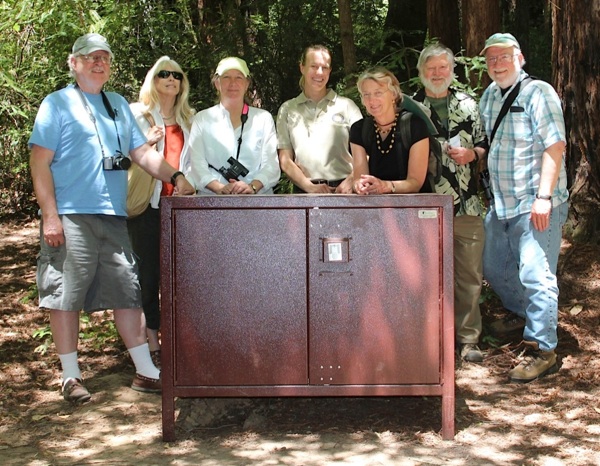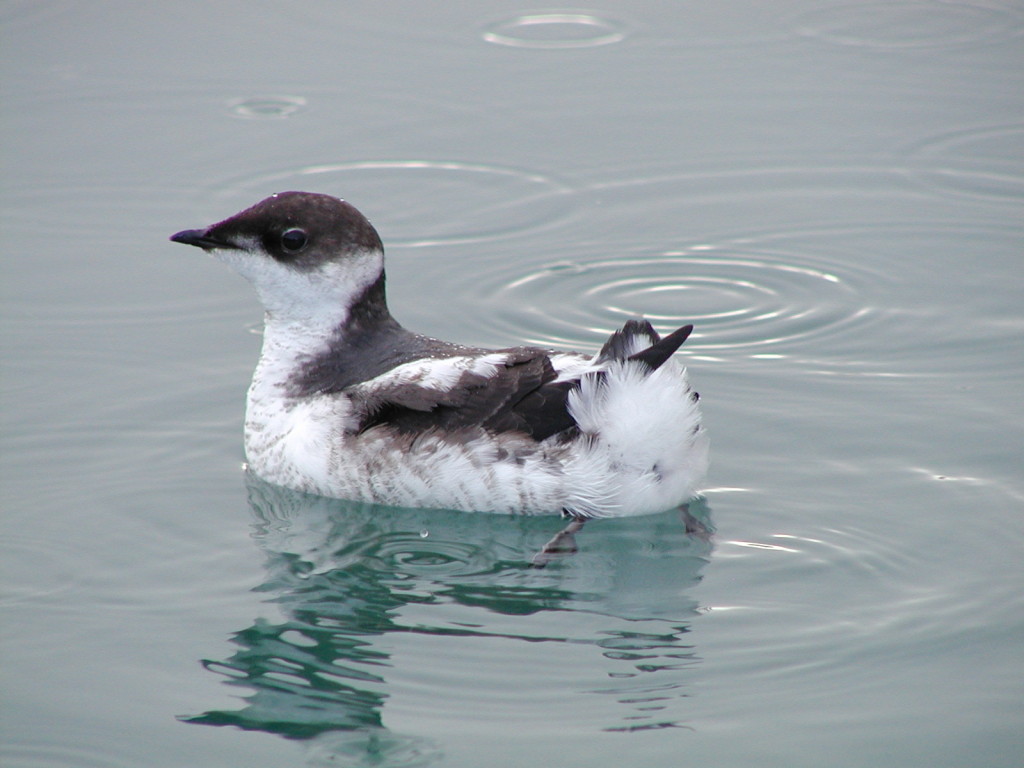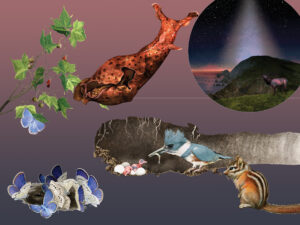Our July-September 2013 issue includes a feature all about Butano State Park, near Pescadero. It’s the site of innovative efforts to protect endangered marbled murrelets, seabirds that nest only in old-growth redwoods and Douglas-fir trees. Portia Halbert is spearheading several projects aimed at keeping crows and jays from eating murrelet eggs.
Portia Halbert’s not sure if “environmental scientist” is the best title to describe her job. “Most people probably think I wear a white coat and work in a lab,” she says, which is definitely not the case. “Land manager” is a better description for the work she does.
Halbert has been with the California State Parks for 13 years now, but she admits her career there had pretty humble beginnings. Fresh out of college, a degree in environmental resource management from Arizona State University under her belt, she started off as a park aid. She worked at first in a kiosk (“just to get my foot in the door”) and then on the Santa Cruz District Resource Crew — the team that does the manual labor on restoration projects, such as the team that helped place hundreds of fake marbled murrelet eggs throughout Butano (read about that in our July issue). That job evolved into a position as a paid consultant and eventually into her current role: Today, along with four other environmental scientists in the Santa Cruz district, Halbert is responsible for land management decisions for 70,000 acres of parklands.
The foundation of the resource program is invasive exotic plant work: removing plants such as ice plant, English ivy, French broom, and eucalyptus so that native communities can be reestablished. “It all comes back to the vegetation,” she says, since vegetation is the foundation of animal and insect communities. Halbert and her crews have planted thousands of native shrubs — such as lizard tail, California sagebrush, and coyote brush — at Wilder Ranch State Park and Coast Dairies, in an effort to re-create a “ribbon” of brush hugging the coast. Tens of thousands of shrubs are planted during these projects — the biggest one involved planting 150,000.
Endangered species management also falls under her purview. Past projects here include removing a dam along the San Lorenzo River and creating backwater ponds (and thus increasing wetland areas) at Laguna Creek to help steelhead and coho salmon and California red-legged frogs.

One of Halbert’s current projects is closing off illegal trails at Henry Cowell Redwoods State Park, as well as repairing a gully in the park’s sandhills, where poorly aligned road placement has resulted in erosion of the sandy substrate. The soils of this uplifted marine terrace of the sandhills create conditions that, as Halbert puts it, “support a suite of unique plants and animals,” including the endangered Mount Hermon June beetle and Zayante band-winged grasshopper, as well as the Santa Cruz kangaroo rat and Silverleaf manzanita. See our previous coverage of the Santa Cruz Sandhills.
Fire is an extremely valuable tool in managing landscapes, and this fall, as she does every year, Halbert will help with controlled burns. The parks department’s burn program here has focused its efforts primarily at Año Nuevo, Henry Cowell, and Big Basin. Timing is everything: Work will start after the first fall rains, when everything is wet, and before the vegetation, thatch, or leaf litter is too wet. “We try to burn as much as we can, given this narrow window of time, but we’re also limited by the number of burn days allowed,” she says, adding that there needs to be “good mixing” in the atmosphere, before burning can take place.
“Good mix” is also a good description of the work Halbert does and why she enjoys it. “My favorite part of the job? It’s the people I work with and the variety of activities I’m lucky to be involved in.”





